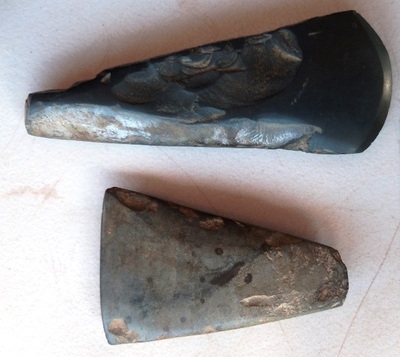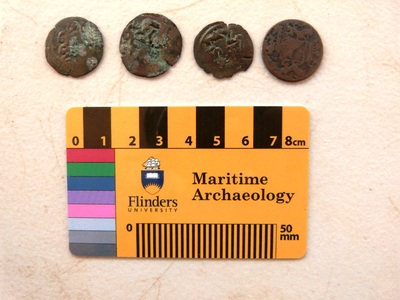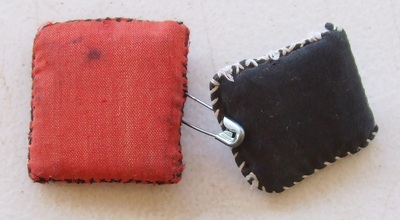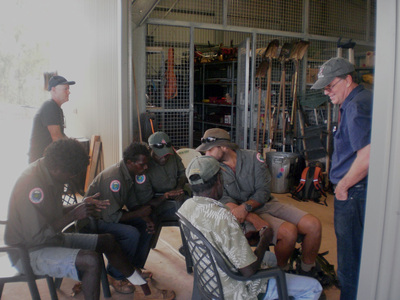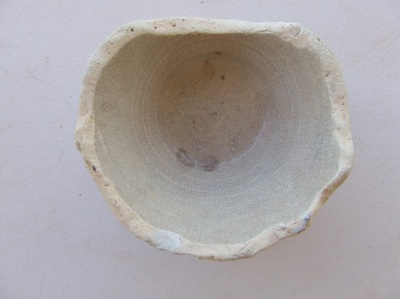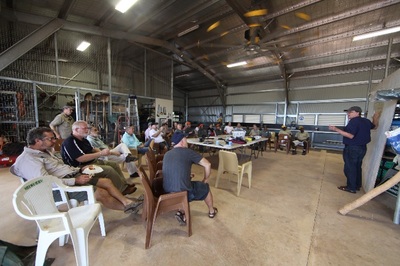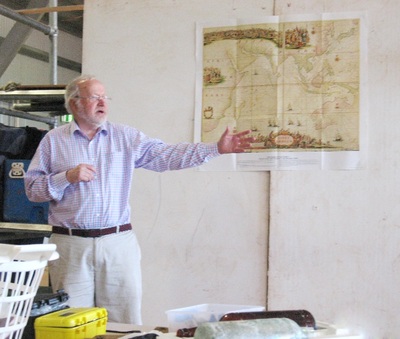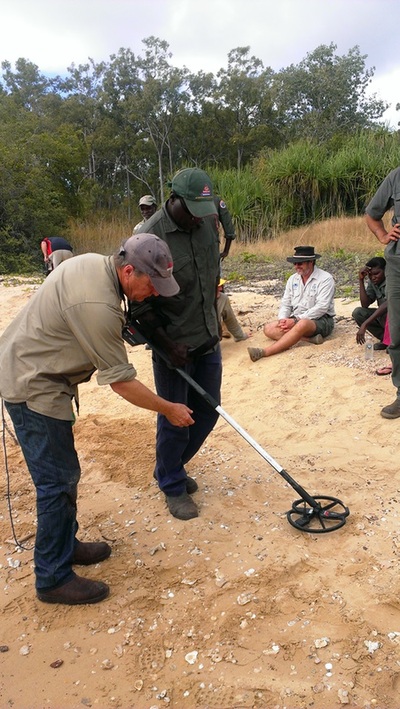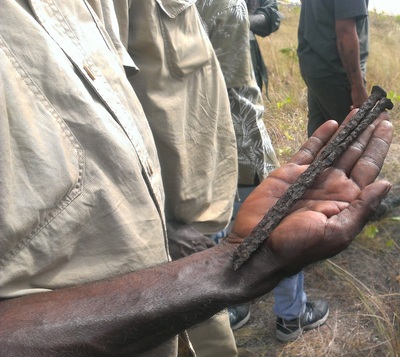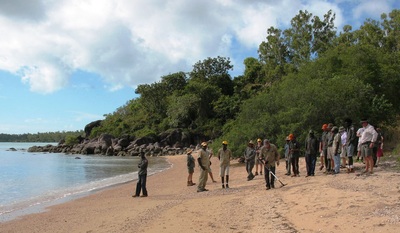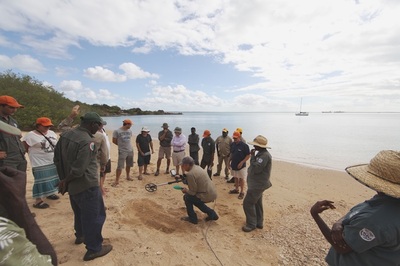Heritage Awareness & Management Workshop

Along the Arnhem Land
coast there are more than 100 registered Macassan sites and thousands of
hearths, stone lines, wells, graves & smoke houses – only a scant few have
been excavated – all are protected by law – none are protected in practice.
Aboriginal oral history recounts ancient wreck sites, canon in caves, stone building foundations, metalworking – white skinned travellers building stone fish traps ‘long before the Macassans’. Tangible items include the art & artefacts of 40,000 years of occupation, as well finds that hint at early foreign visitors. These include Billy Boustead’s 15th century SE European Jar – the 15th century style Portuguese swivel gun identical to the Ternate wreck guns and the c12th century African coins discovered by Maurie Isenberg on the Wessel Islands 70 years ago - Australia’s oldest imported artefacts.
Depopulation by smallpox, extreme isolation (3,000kms from Sydney) – 70 years of the Arnhemland Aboriginal Reserve & the fierce reputation as warriors have kept the sites safe in the past. Today, they are threatened by many factors including sea level rise - higher population and the increased frequency & intensity of cyclonic activity. However, the Sea Ranger groups are now organised and out there on the country - monitoring the environment and performing such tasks as the collection & Cyber Tracker mapping of ghost nets.
The challenge lies in up-skilling Rangers to become the curators of Macassan heritage sites - alerting authorities to sites freshly exhumed by storms & rising sea levels – participating in rescue digs & site protection – undertaking a Longitudinal Study. Partnerships can be fostered to promote research into non-industrial areas, including scanning for items dropped from canoes between the shore and the praus riding at anchor – narrow but deep creeks where praus would be cross-lashed amid the mangroves to sit out cyclones – DNA dating of Tamarind trees - excavation of stone fish traps - phasing of the trade from Normanton to Broome, landscape evaluation, predictive modelling and a research ethics committee.
Paramount is engagement with local groups - elderly people - schools, Local Boards & Aged Care facilities. There is an unprecedented opportunity to exchange knowledge and develop skills & understanding whilst laying the foundations for tourism, education, fulfilment and fun - EnterTrainment.
Sensitising Rangers to Artefacts – Macassan sites, stone fish traps, ballast stones.
Predictive Modelling – Predict likely location of sites by signature features.
Complementary Learning – Magnetometery, Metal detecting, Google Earth.
Landscape Evaluation – Blending traditional skills with current science.
Surveillance Triggers – Risk factors e.g. human activity, sea level rise, storm action.
Reporting & Preservation – Procedures for recording, reporting & retrieval of finds.
Collections & Curatorship – Preservation, interpretation & display of finds.
Engagement – Aged Care, schools, research organisations, Government agencies.
Heritage Economics – Tourism, heritage precincts, volunteers, travelling exhibitions.
Workshop to conclude with a visit to a Macassan site & 'hands-on' metal detection.
Aboriginal oral history recounts ancient wreck sites, canon in caves, stone building foundations, metalworking – white skinned travellers building stone fish traps ‘long before the Macassans’. Tangible items include the art & artefacts of 40,000 years of occupation, as well finds that hint at early foreign visitors. These include Billy Boustead’s 15th century SE European Jar – the 15th century style Portuguese swivel gun identical to the Ternate wreck guns and the c12th century African coins discovered by Maurie Isenberg on the Wessel Islands 70 years ago - Australia’s oldest imported artefacts.
Depopulation by smallpox, extreme isolation (3,000kms from Sydney) – 70 years of the Arnhemland Aboriginal Reserve & the fierce reputation as warriors have kept the sites safe in the past. Today, they are threatened by many factors including sea level rise - higher population and the increased frequency & intensity of cyclonic activity. However, the Sea Ranger groups are now organised and out there on the country - monitoring the environment and performing such tasks as the collection & Cyber Tracker mapping of ghost nets.
The challenge lies in up-skilling Rangers to become the curators of Macassan heritage sites - alerting authorities to sites freshly exhumed by storms & rising sea levels – participating in rescue digs & site protection – undertaking a Longitudinal Study. Partnerships can be fostered to promote research into non-industrial areas, including scanning for items dropped from canoes between the shore and the praus riding at anchor – narrow but deep creeks where praus would be cross-lashed amid the mangroves to sit out cyclones – DNA dating of Tamarind trees - excavation of stone fish traps - phasing of the trade from Normanton to Broome, landscape evaluation, predictive modelling and a research ethics committee.
Paramount is engagement with local groups - elderly people - schools, Local Boards & Aged Care facilities. There is an unprecedented opportunity to exchange knowledge and develop skills & understanding whilst laying the foundations for tourism, education, fulfilment and fun - EnterTrainment.
Sensitising Rangers to Artefacts – Macassan sites, stone fish traps, ballast stones.
Predictive Modelling – Predict likely location of sites by signature features.
Complementary Learning – Magnetometery, Metal detecting, Google Earth.
Landscape Evaluation – Blending traditional skills with current science.
Surveillance Triggers – Risk factors e.g. human activity, sea level rise, storm action.
Reporting & Preservation – Procedures for recording, reporting & retrieval of finds.
Collections & Curatorship – Preservation, interpretation & display of finds.
Engagement – Aged Care, schools, research organisations, Government agencies.
Heritage Economics – Tourism, heritage precincts, volunteers, travelling exhibitions.
Workshop to conclude with a visit to a Macassan site & 'hands-on' metal detection.
The Handling Collection
|
POSSIBLE FINDS IN ARNHEMLAND [1500 AD TO - 1945 AD]
Weapon Items Flintlock Musket Flint [ x 3] – undated – relevant from 1600 AD to 1850AD – [from the flint mines of Brandon, Suffolk UK] Musket shot [x2] -lead – c.1750 [shipwreck of HMS Invincible – 1758] New Guinean stone axes – antiquity unknown - Port Moresby Coins Chinese coinage - copper/bronze - [probably 19th or early 20th Century] Dutch coin - silver - Thaler [notionally 1783] Spanish coin – silver- Quarter dollar – 1788 [Australian proclamation coin] British Coinage- various – silver/copper 1500 AD – 1899 AD Dutch VOC coin – [ x 2] copper 18th Century Personal Items British & Middle Eastern Tobacco Pipes & stem fragments [ approx 8] - clay – Date range 1600 AD-1870 AD –[England, Australia & Jordan] Buttons/ buckles/beads – copper/alloy/mother of pearl 19th Century. Pearl shell specimen – source Fred Gray, Groote Eylandt Macassan pottery [ x1] antiquity not known - probably 18th or 19th Century [ source: Makmunja, Groote Eylandt] Pocket watch fragment [ x 1] –alloy - mid- 19th Century – WA Gold Mine, Harmonica reed fragment – alloy - 1870 Bottle and porcelain Fragments including square case gin prunt – glass - mid/late Nineteenth Century- source various Inkwell =- 1880 – pottery – 1880 Spoon and fork – late nineteenth century – iron -source Tasmanian site Fishhooks – bronze NT [ Ian M] Ship Items Iron and one copper ship nail [ source : 1840 Shipwreck of the 1824 British Merchant William Salthouse] [or nail from the wreck at least] Handmade nails – iron - [ sources various] Basalt river pebble/ballast stone [from Ian M] Couple of basalt river pebbles similar to the one DB is holding in the muthali photo [from central Qld] A few stone artefacts – flakes, cores, unifacial spear points, etc. WWII cartridge cases, beer bottles, webbing. |
Macassan Site Visit & Metal Detector Training
|
The discovery of nails close to a Macassan processing site is an issue as all sites are protected. No such nails have ever been recorded archaeologically in such a context, although the Yolngu advise that they have seen them on other sites and that the old people used to make fish spears out of them. A non-invasive MD sweep revealed metal objects of identical signature and funding is required to mount an expedition to detect, plot and document these artefacts in collaboration with senior Yolngu, Rangers & Norforce. A future research, education & tourism venue right on the doorstep.
|
